11634 A PROBABLY UNIQUE CARVED INDIAN ROSEWOOD ARMCHAIR SUPPORTED BY LEGS IN THE FORM OF STANDING SOLDIERS Anglo-Indian. Second Quarter Of The Nineteenth Century. Measurements: Height: 39 1/4″ (99.6 cm); Width: 26″ (66 cm); Depth: 23 1/2″ (59.7); Approximate height to seat: 16 1/2″ (41.9 cm).
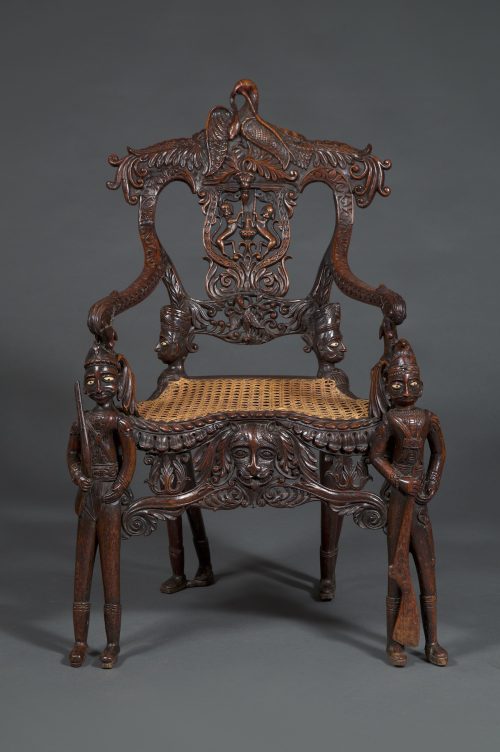
Research
Of Indian rosewood. The carved open back rest surmounted by an eagle with a snake in its beak flanked by feather and scrolled foliate motifs at the shoulders, centered by a shield shape containing two stylized standard bearing lions flanking a finial, above a second eagle. The downswept arms with carved rinceaux to the top and almond-shaped pattern to the sides terminating in foliate handrests. The serpentine caned seat above seatrail of conforming foliate scrolled decoration centered by a leonine mask. The whole raised on four legs, each in the form of an Indian soldier wearing European-inspired uniform and carrying weapons. The rear soldiers wearing identical shako-style hats and holding muskets in a shooting position along the side of the seat. The front soldiers wearing stylized turbans with feathered tassels, one holds his musket at his shoulder and the other at his feet. This piece does not contain ivory. Eyes replaced with bovine bone. Minor repairs to carving. Recaned.
Provenance:
Probably Lennox Money Gallery, London, 1980’s
US Collection
The striking form of the present armchair, with full-length sculpted soldiers forming all four legs, is likely without precedent in Anglo-Indian furniture design. The combination of varying specific uniforms, headdress and weaponry lead to the view that the chair is unlikely to be a purely decorative exercise, but instead a documentary piece designed to signify or commemorate a specific event. In such a case it is possible that it was a gesture of gratitude from a local Maharajah, Nawab, or Nizam to a significant English military or political figure, as elements of the British East India Company crest are carved in the back rest. The western form and exotic decoration of this suite also reflects the blending of taste in the courts of India. The chair’s emulation of European military and heraldic conventions is combined with refined carving of traditional Indian motifs, to achieve a most unusual record of colonial martial history.
Full research report available on request.
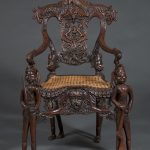
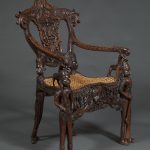
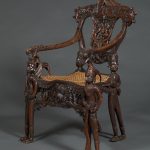
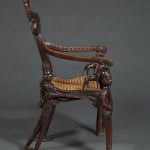
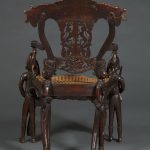
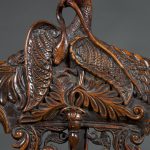
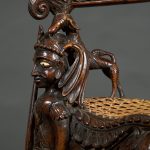
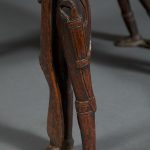
Comments are closed.